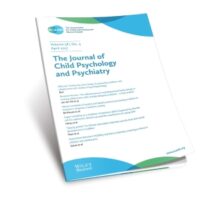Aetiology
-

Annual Research Review: Perspectives on progress in ADHD science – from characterization to cause
Open Access paper from the JCPP – “In this review, we provide a selective and focused survey of the scientific field of ADHD, providing our personal perspectives on what constitutes the scientific consensus, important new leads to be highlighted, and the key outstanding questions to be addressed going forward. We cover two broad domains – clinical characterization and, risk factors, causal processes and neuro-biological pathways”. Edmund J.S. Sonuga-Barke (pic) et al.
Read more -

Transdiagnostic profiles of behaviour and communication relate to academic and socioemotional functioning and neural white matter organisation
Open Access paper from the JCPP – “Behavioural and language difficulties co-occur in multiple neurodevelopmental conditions. Our understanding of these problems has arguably been slowed by an overreliance on study designs that compare diagnostic groups and fail to capture the overlap across different neurodevelopmental disorders and the heterogeneity within them”. Silvana Mareva (pic) et al.
Read more -

Multivariate associations between behavioural dimensions and white matter across children and adolescents with and without attention-deficit/hyperactivity disorder
Open Access paper from the JCPP – “This study aimed to identify associations between white matter and a broad set of clinical features across children and adolescent with and without ADHD using a data-driven multivariate approach”. Xuan Bu et al.
Read more -

Bidirectional associations between sleep problems and behavioural difficulties and health-related quality of life in adolescents: Evidence from the SCAMP longitudinal cohort study
Open Access paper from JCPP Advances – “Sleep problems show associations with negative outcomes in both physical and mental health in adolescents, but the associations may be reciprocal”. Chen Shen (pic) et al.
Read more -

Relative age in the school year and risk of mental health problems in childhood, adolescence and young adulthood
Open Access paper from the JCPP – “We used a regression discontinuity design to examine the effect of relative age on risk of mental health problems using data from a large UK population-based cohort ALSPAC. We compared risk of mental health problems between ages 4 and 25 years using the parent-rated Strengths and Difficulties Questionnaire (SDQ), and depression using self-rated and parent-rated Short Mood and Feelings Questionnaire (SMFQ) by relative age”. Thomas Broughton (pic) et al.
Read more -

Editorial Perspective: A perfect storm – how and why eating disorders in young people have thrived in lockdown and what is happening to address it
Open Access paper from the JCPP – “The number of children and young people referred to community eating disorders services escalated dramatically shortly after onset of the Covid-19 pandemic. Many presented with medical instability following restrictive eating and needed acute hospitalisation to correct malnutrition”. Dasha Nicholls (pic)
Read more -

Contemporary screen time modalities and disruptive behavior disorders in children: a prospective cohort study
Paper from the JCPP – “This study’s objective was to determine the prospective associations of contemporary screen time modalities with conduct and oppositional defiant disorder in a national cohort of 9–11-year-old children”. Jason M. Nagata (pic) et al.
Read more -

Early manifestations of genetic liability for ADHD, autism and schizophrenia at ages 18 and 24 months
Open Access paper from JCPP Advances – “Given that ADHD, autism and schizophrenia are all highly heritable, we tested the hypothesis that in the general population, measures of toddler language development, motor development and temperament are associated with genetic liability to ADHD, autism and/or schizophrenia”. Lucy Riglin (pic) et al.
Read more -

ACEs – Adverse Childhood Experiences
Adverse Childhood Experiences (ACEs) are defined as situations that lead to an elevated risk of children and young people experiencing damaging impacts on their health and other social outcomes across the life course.
Read more -

Which perinatal exposures confer a risk of offspring depression?
In December 2020, the Journal of Child Psychology and Psychiatry published a Research Review authored by Xiangfei Meng and colleagues Yingying Su and Carl D’Arcy on the developmental origins of depression.
Read more